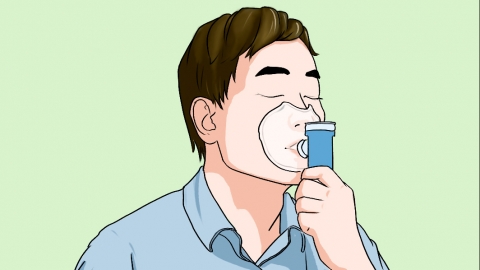What are the benefits and side effects of oxygen inhalation?
Generally speaking, the benefits of oxygen inhalation include alleviating fatigue, improving sleep, enhancing brain function, reducing the burden on the heart and lungs, and promoting wound healing. Potential side effects include oxygen toxicity, dryness of the respiratory tract, posterior lens fibroplasia, respiratory depression, and absorption atelectasis. A detailed analysis is as follows:

I. Benefits of Oxygen Inhalation
1. Alleviating Fatigue
Oxygen inhalation increases blood oxygen levels, supplying more adequate oxygen to various organs of the body, promoting metabolism, enabling the body to recover energy more quickly, and relieving fatigue caused by hypoxia.
2. Improving Sleep
Oxygen inhalation helps relax the body and mind, alleviating sleep disorders caused by hypoxia, such as difficulty falling asleep, frequent dreaming, and waking easily, thereby improving sleep quality and leaving one more energetic after waking.
3. Enhancing Brain Function
The brain has a high demand for oxygen. Oxygen inhalation improves oxygen supply to the brain, enhancing cognitive abilities and memory, increasing work and learning efficiency, with particularly noticeable effects during periods of intense mental activity.
4. Reducing the Burden on the Heart and Lungs
For individuals with compromised heart and lung function, oxygen inhalation can reduce the workload involved in oxygen uptake and delivery, alleviate symptoms such as shortness of breath, and aid in restoring and stabilizing cardiopulmonary function.
5. Promoting Wound Healing
Adequate oxygen provides a favorable metabolic environment for tissue cells, promoting cellular repair and regeneration, accelerating wound healing, and reducing the occurrence of complications such as infections.
II. Side Effects of Oxygen Inhalation
1. Oxygen Toxicity
Prolonged inhalation of high-concentration oxygen may damage the lungs and central nervous system. Symptoms such as retrosternal pain, coughing, nausea and vomiting, facial muscle twitching, dizziness, and other symptoms may appear, seriously affecting health.
2. Dryness of the Respiratory Tract
Dry oxygen may accelerate evaporation of moisture from respiratory mucosa, potentially causing dryness of the respiratory tract, discomfort in the nasal passages and throat, symptoms such as dry nose, dry throat, sore throat, and may also cause thickened sputum that is difficult to cough out.
3. Posterior Lens Fibroplasia
For premature or newborn infants, prolonged inhalation of high-concentration oxygen may cause retinal vasoconstriction and occlusion, which can subsequently lead to posterior lens fibroplasia, potentially causing blindness in severe cases.
4. Respiratory Depression
For patients with chronic obstructive pulmonary disease (COPD) and carbon dioxide retention, high-concentration oxygen may depress the respiratory center, causing shallow and slow breathing, further increasing carbon dioxide retention and worsening the condition.
5. Absorption Atelectasis
During high-concentration oxygen inhalation, nitrogen in the alveoli is largely replaced by oxygen. Once the oxygen is rapidly absorbed, the pressure inside the alveoli decreases, which may lead to alveolar collapse, resulting in absorption atelectasis and impairing gas exchange.
During oxygen inhalation, it is essential to strictly follow the doctor's instructions to control the oxygen concentration and duration, avoiding arbitrary adjustments. Additionally, a humidifier can be used to moisten the inhaled oxygen, maintaining a moist respiratory tract and reducing discomfort from dryness.








